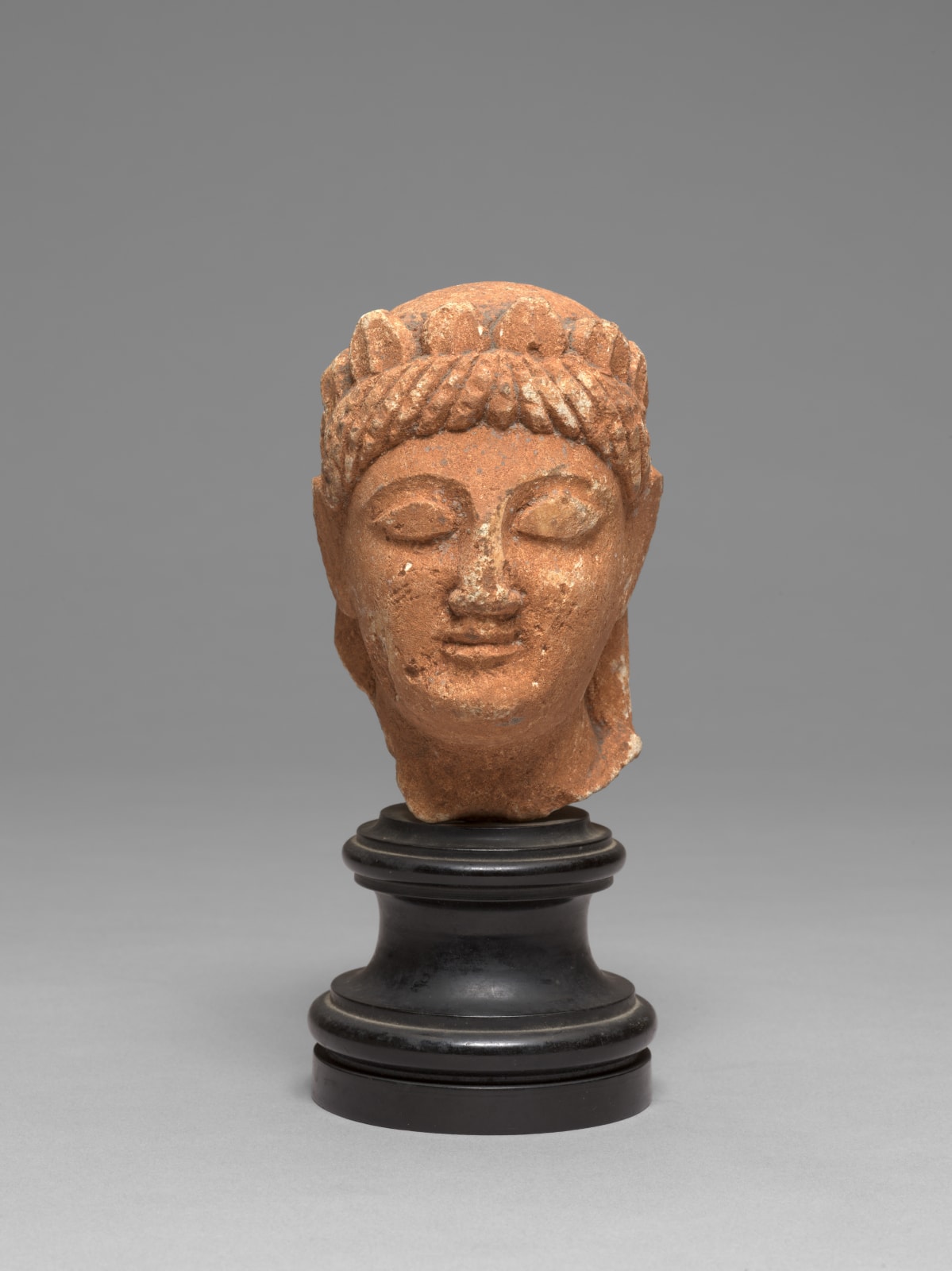CYPRIOT HEAD OF A VOTARY, Archaic Period, circa late 6th-early 5th Century B.C.
limestone
height 13.5 cm
height 5 1/4 in
height 5 1/4 in
In Cyprus, idols in terracotta and stone begin to appear as offerings in sanctuaries or tombs from the Chalcolithic period, but the production flourished during the 7th century showing evident...
In Cyprus, idols in terracotta and stone begin to appear as offerings in sanctuaries or tombs from the Chalcolithic period, but the production flourished during the 7th century showing evident Syrian-Palestinian and Egyptian influences. These votive offerings were placed in shrines, which were arranged in rows along the walls around the altar. Depictions of female votaries appeared in Cypriot art in the sixth century B.C. There were several iconographic types, all related to ritual activities associated with the cult of a fertility deity.
Louis de Clercq is known for his photographs taken during an expedition of the French Ministry of Public Instruction, accompanying the archaeologist Alban Emmanuel-Guillaume Rey (1837-1916). Throughout his life de Clercq assembled an important collection of marbles, vases and ivories, published posthumously by de Ridder between 1906 and 1908. The majority of this collection was donated to the Musee du Louvre after his death.
Louis de Clercq is known for his photographs taken during an expedition of the French Ministry of Public Instruction, accompanying the archaeologist Alban Emmanuel-Guillaume Rey (1837-1916). Throughout his life de Clercq assembled an important collection of marbles, vases and ivories, published posthumously by de Ridder between 1906 and 1908. The majority of this collection was donated to the Musee du Louvre after his death.
Provenance
Louis de Clercq (1836-1901), ParisNicolas Koutoulakis (1910-1996), Paris and Geneva
Literature
A. de Ridder, Collection de Clercq, Catalogue Tome V: Les Antiquités Chypriotes, Paris, 1908, no. 71
Art Loss Register ref. S00219941
19
of
19




